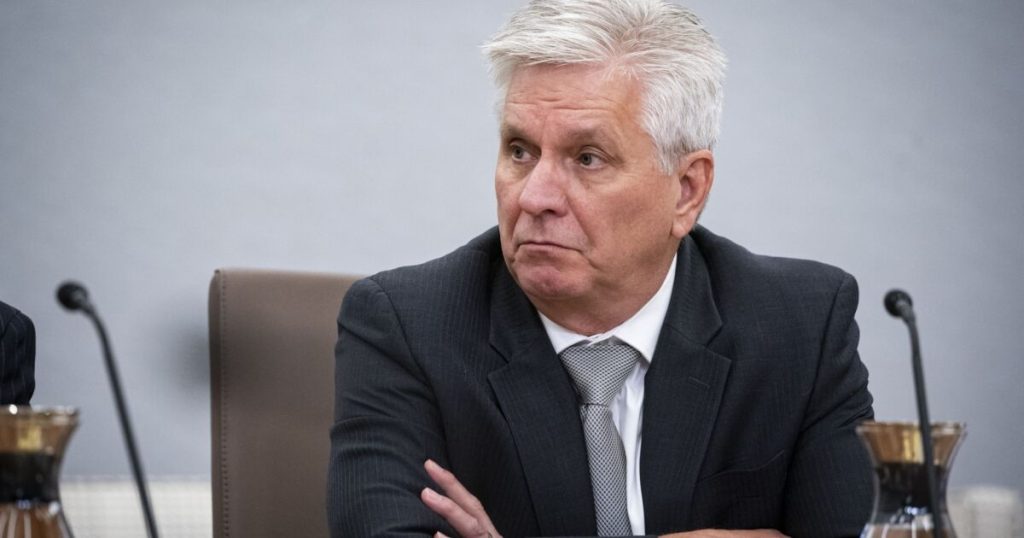Al Drago/Bloomberg
The Federal Reserve’s biggest balance sheet hawk sees no reason to slow the pace of the central bank’s asset reductions next month.
In a Friday morning statement, Fed Gov. Christopher Waller said he voted against the Federal Open Market Committee’s decision to slow the pace of asset runoff because there was no immediate need to do so. He said there were still more than enough reserves — deposits held at the Fed — for the banking system to operate smoothly.
“[I]n my view we are not there yet because reserve balances stand at over $3 trillion and this level is abundant,” Waller said in the statement. “There is no evidence from money market indicators or my outreach conversations that the banking system is getting close to an ample level of reserves.”
The Fed does not have a strict or easily quantifiable target for the amount of reserves that should be on its balance sheet. Rather, it aims for a level that is “ample,” or slightly above what is needed for banks to meet their liquidity needs and transact with each other without disrupting monetary policy. Anything above that level is deemed “abundant.” Anything below is “scarce.”
When the Fed reduces its assets, which it has been doing for nearly three years, it automatically cuts its liabilities by the same amount. The central bank has shrunk its balance sheet by nearly $2.2 trillion since June 2022, with most of the liability reduction coming from the overnight reverse repurchase agreement program, or ON RRP, through which money market funds lend money to the Fed overnight for modest return.
Waller has often referred to funds parked in the ON RRP as excess liquidity in the financial system and argued that the Fed is safe to continue allowing assets to roll off its books until its usage drops to zero. ON RRP uptake dropped to its
On Wednesday, the Federal Open Market Committee voted to
Fed Chair Jerome Powell said the committee took this action after observing fluctuations in another category of central bank liabilities: the Treasury General Account. Powell said substantial inflows to and outflows from the TGA during the debate over the government’s debt limit spurred the conversation. While the group considered pausing the runoff while the episode played out, it ultimately opted for the slowdown to allow reduction to continue on.
“If you’re cutting the pace of [quantitative tightening] in half, the runway is roughly doubled, it’s lower for longer and people really liked that,” Powell said. “It’s like a plane coming in for a landing.”
In his statement, Waller called shrinking the Fed’s balance sheet “an important part of normalizing monetary policy implementation” and said it was important for the central bank to slow down as reserves near an ample level. He said he supported the decision to slow the pace of runoff
Since there is no immediate sign of shortage, Waller said he would have rather the committee maintained the current runoff rate while implementing a fallback plan, should reserves suddenly begin to drain quicker than expected.
“Rather than changing our current pace of balance sheet reduction, the Federal Reserve should rely on those tools and develop a plan for how to respond to short-run strains if they emerge,” he said. “Such a plan could be implemented swiftly in the event more reserves need to be injected into the banking system.”
Waller added that even with the slower pace of runoff, a contingency plan will still be necessary, though he believes the Fed has the tools it needs for an emergency response.
“While this is a procedural matter, good process leads to good outcomes, and good contingency planning helps avoid disruptions to markets and to the FOMC’s efforts to achieve our economic objectives,” he said.

